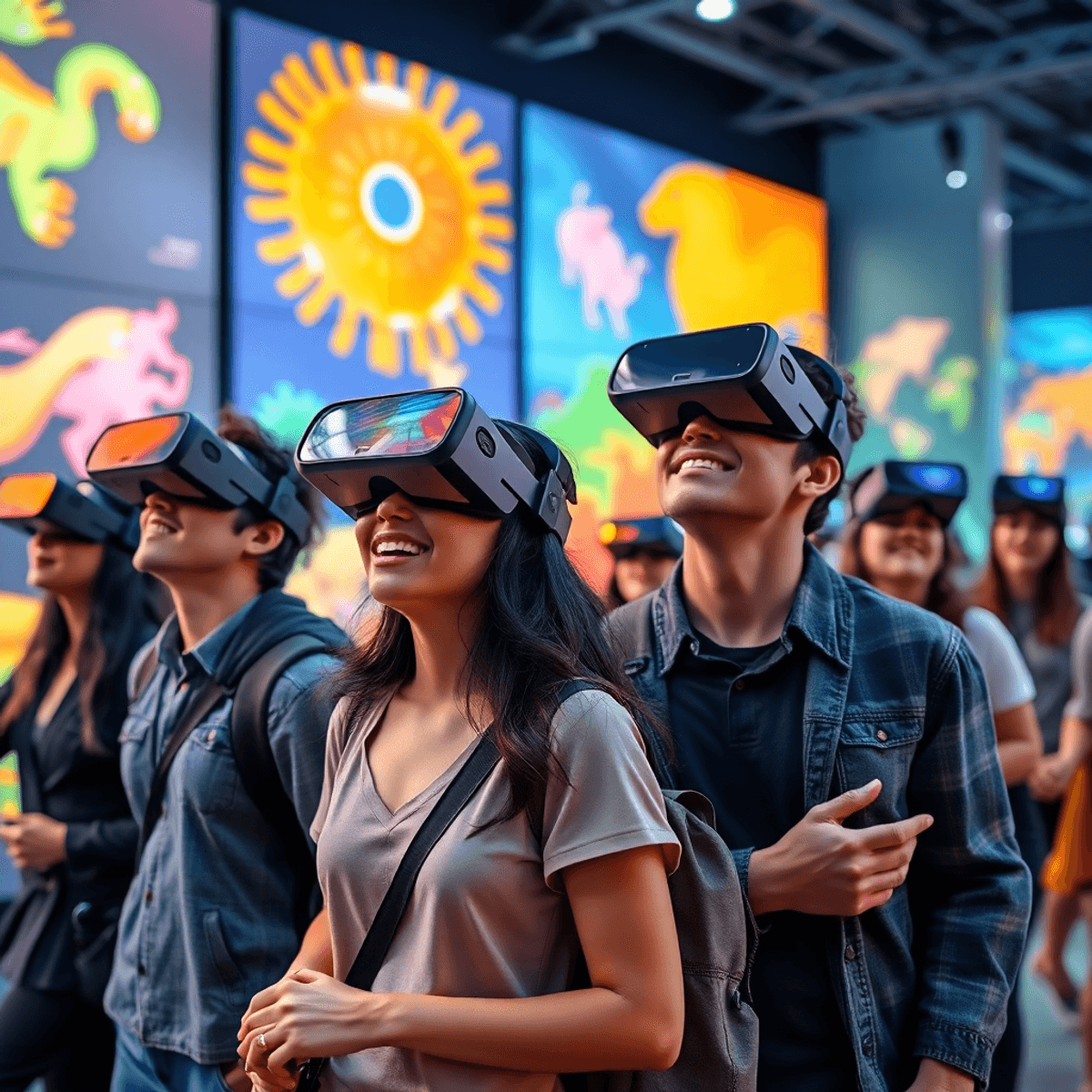
Museums and galleries have a fresh opportunity to engage audiences through free-roam VR technology. This innovative approach transforms the visitor experience, enabling multiple users to step into immersive environments that tell interactive stories of cultural heritage.
Free-roam VR allows users to move freely within virtual spaces, similar to the new free-roam adventures at the Titanic Shipwreck. It enhances storytelling by immersing visitors in historical contexts.
The potential of free-roam VR is clear: it can revolutionize how cultural heritage is presented and experienced, creating deeper connections between visitors and the past. Furthermore, as seen with Eclipso’s changes to the business model for cultural free-roam VR attractions, this technology is not just a trend but a significant shift in the way we approach cultural experiences.
Immersive institutions are redefining the cultural landscape. These venues prioritize interaction and engagement, allowing visitors to become active participants in their experiences.
Traditional museums focus on static displays and passive observation. In contrast, immersive institutions emphasize:
These projects illustrate how immersive institutions are pushing boundaries, transforming traditional visitor experiences into vibrant explorations of culture and heritage.
Free-roam VR technology is transforming how museums and galleries engage visitors. This innovation goes beyond traditional formats like 360-degree videos or stationary installations. It leverages untethered experiences that allow users to explore virtual environments without physical constraints.
The combination of freedom and interactivity unlocks new dimensions in storytelling. It cultivates a deeper connection between visitors and cultural narratives, making every visit an opportunity for exploration and discovery. A recent case study reveals just how positively users feel about these immersive experiences in museum exhibits, further solidifying the impact of free-roam VR technology on the museum sector.
Museums and galleries are seizing the chance to leverage free-roam VR technology for cultural heritage storytelling. This approach transforms passive exhibitions into dynamic, interactive experiences.
Glitch Studios exemplifies innovative partnerships. They create environments where visitors step into immersive narratives, experiencing history firsthand. Imagine walking through ancient marketplaces or witnessing pivotal moments in time, all crafted with meticulous detail.
The blending of augmented reality (AR) with live performances brings cultural narratives to life. This fusion enhances storytelling by placing real actors within digital landscapes. Audiences engage directly with the performance while navigating a virtual world that complements the action on stage.
This new wave of digital art venues is reshaping how cultural stories are told and experienced. Free-roam VR headsets allow multiple users to explore simultaneously, offering a communal yet individualized experience. The lines between physical and digital continue to blur, providing fresh opportunities for museums and galleries worldwide to captivate and educate their audiences.
Key collaborations are reshaping the landscape of museums and galleries.
HTC Vive Arts stands at the forefront, providing funding and resources for experimental VR projects. This partnership empowers institutions to explore innovative storytelling techniques, enhancing visitor engagement through immersive experiences.
Notably, new research reveals a growing demand for VR access to museum collections, highlighting the potential of virtual reality in broadening access to cultural heritage.
Creative XR plays a pivotal role in supporting VR initiatives across cultural settings. By fostering collaboration among artists, technologists, and curators, this initiative bridges diverse perspectives. The result is a vibrant ecosystem where creativity thrives, driving forward-thinking projects that captivate audiences.
Looking ahead, investments like the CoStar National Lab offer exciting prospects. Launching in January 2026 with a £100 million investment from the Arts and Humanities Research Council, this facility aims to establish a national hub for immersive media research and development. It promises to unite various stakeholders in the cultural sector, paving the way for groundbreaking advancements.
These partnerships signal a commitment to integrating technology into cultural heritage. As museums embrace this shift, opportunities for innovation expand, creating dynamic environments for education and engagement. Expect more transformative projects as these collaborations evolve.
Adopting free-roam VR brings a mix of challenges and opportunities for museums:
On the flip side, technological advancements pave the way for broader audience reach. Virtual exhibitions allow access from anywhere in the world, breaking geographical barriers. This potential fosters inclusivity, inviting diverse audiences into immersive cultural experiences.
Advancements in VR technology promise a dynamic evolution for museums. Expect wireless headsets with higher resolution displays that enhance visual fidelity. This leap will redefine how audiences interact with cultural narratives.
Key trends to watch include:
These shifts present fresh opportunities for cultural heritage engagement.
The impact of digital art on culture is undeniable. Museums and galleries have a fresh opportunity to collaborate with emerging digital art venues. Free-roam VR headsets offer the power to tell interactive stories of cultural heritage to multiple users.
Embracing technologies like free-roam VR transcends mere visitor attraction.
This evolution paves the way for a vibrant future for museums, enriching cultural narratives and experiences worldwide.


